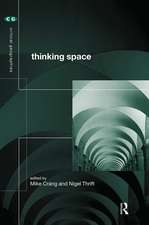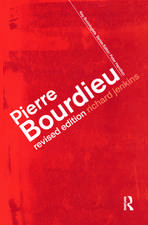How to Build Social Science Theories
Autor Pamela J. Shoemaker, James William Tankard, Dominic L. Lasorsaen Limba Engleză Paperback – 18 feb 2004
| Toate formatele și edițiile | Preț | Express |
|---|---|---|
| Paperback (1) | 919.77 lei 6-8 săpt. | |
| SAGE Publications – 18 feb 2004 | 919.77 lei 6-8 săpt. | |
| Hardback (1) | 1206.91 lei 6-8 săpt. | |
| SAGE Publications – 18 feb 2004 | 1206.91 lei 6-8 săpt. |
Preț: 919.77 lei
Preț vechi: 1121.67 lei
-18% Nou
Puncte Express: 1380
Preț estimativ în valută:
176.00€ • 184.22$ • 146.49£
176.00€ • 184.22$ • 146.49£
Carte tipărită la comandă
Livrare economică 31 martie-14 aprilie
Preluare comenzi: 021 569.72.76
Specificații
ISBN-13: 9780761926672
ISBN-10: 0761926674
Pagini: 240
Dimensiuni: 152 x 229 x 13 mm
Greutate: 0.33 kg
Ediția:New.
Editura: SAGE Publications
Colecția Sage Publications, Inc
Locul publicării:Thousand Oaks, United States
ISBN-10: 0761926674
Pagini: 240
Dimensiuni: 152 x 229 x 13 mm
Greutate: 0.33 kg
Ediția:New.
Editura: SAGE Publications
Colecția Sage Publications, Inc
Locul publicării:Thousand Oaks, United States
Cuprins
Preface
Foreword - Jerald Hage
1. Introduction: The Nature of Science
2. Theoretical Concepts: The Building Blocks of Theory
3. Theoretical Statements Relating Two Variables
4. Theoretical and Operational Linkages
5. Theoretical Statements Relating Three Variables
6. Theoretical Statements Relating Four or More Variables
7. Theoretical Models
8. Creativity and Theory Building
9. Using and Evaluating Theory
Appendix A: Guidelines for Preparing Tables and Figures
Appendix B: Acceptable Levels of Measurement for Various Statistics
References
Index
About the Authors
Foreword - Jerald Hage
1. Introduction: The Nature of Science
2. Theoretical Concepts: The Building Blocks of Theory
3. Theoretical Statements Relating Two Variables
4. Theoretical and Operational Linkages
5. Theoretical Statements Relating Three Variables
6. Theoretical Statements Relating Four or More Variables
7. Theoretical Models
8. Creativity and Theory Building
9. Using and Evaluating Theory
Appendix A: Guidelines for Preparing Tables and Figures
Appendix B: Acceptable Levels of Measurement for Various Statistics
References
Index
About the Authors
Notă biografică
Pamela Shoemaker (Ph.D., University of Wisconsin, 1982) is the John Ben Snow Professor, an endowed research chair at the S.I. Newhouse School of Public Communications at Syracuse University. She is the author of Gatekeeping (Sage, 1991) and Mediating the Message: Theories of Influences on Mass Media Content (with Stephen D. Reese, Longman Publishers, 1996). As an internationally known scholar, Pamela is a past president (1995-1996) of the Association for Education in Journalism and Mass Communications (AEJMC) and serves or has served on the editorial boards of many major journals in the mass communications field.
Descriere
As straightforward as its title, How to Build Social Science Theories sidesteps the well-traveled road of theoretical examination by demonstrating how new theories originate and how they are elaborated. Essential reading for students of social science research, this book traces theories from their most rudimentary building blocks (terminology and definitions) through multivariable theoretical statements, models, the role of creativity in theory building, and how theories are used and evaluated. Authors Pamela J. Shoemaker, James William Tankard, Jr., and Dominic L. Lasorsa intend to improve research in many areas of the social sciences by making research more theory-based and theory-oriented.
The book begins with a discussion of concepts and their theoretical and operational definitions. It then proceeds to theoretical statements, including hypotheses, assumptions, and propositions. Theoretical statements need theoretical linkages and operational linkages; this discussion begins with bivariate relationships, as well as three-variable, four-variable, and further multivariate relationships. The authors also devote chapters to the creative component of theory-building and how to evaluate theories.
The book begins with a discussion of concepts and their theoretical and operational definitions. It then proceeds to theoretical statements, including hypotheses, assumptions, and propositions. Theoretical statements need theoretical linkages and operational linkages; this discussion begins with bivariate relationships, as well as three-variable, four-variable, and further multivariate relationships. The authors also devote chapters to the creative component of theory-building and how to evaluate theories.
















